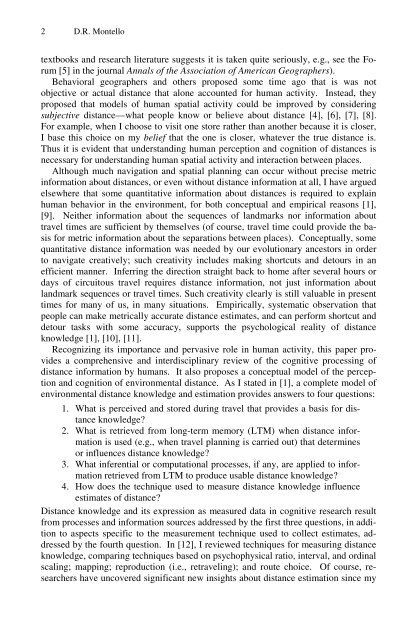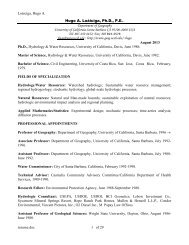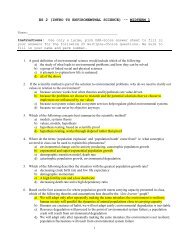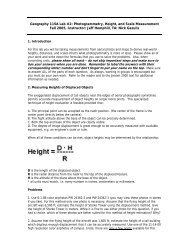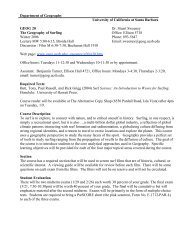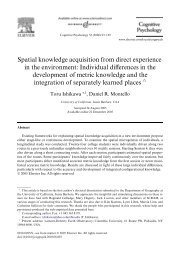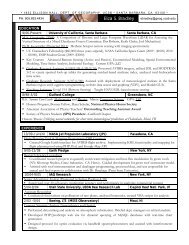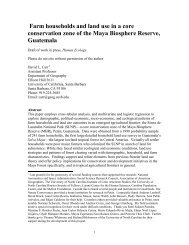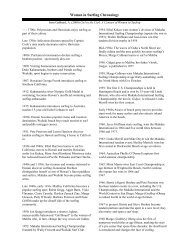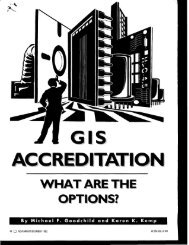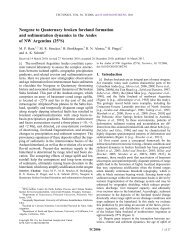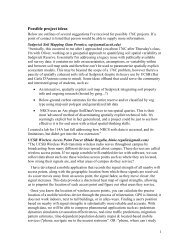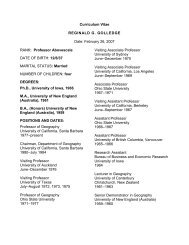A Conceptual Model of the Cognitive Processing of Environmental ...
A Conceptual Model of the Cognitive Processing of Environmental ...
A Conceptual Model of the Cognitive Processing of Environmental ...
Create successful ePaper yourself
Turn your PDF publications into a flip-book with our unique Google optimized e-Paper software.
2 D.R. Montello<br />
textbooks and research literature suggests it is taken quite seriously, e.g., see <strong>the</strong> Forum<br />
[5] in <strong>the</strong> journal Annals <strong>of</strong> <strong>the</strong> Association <strong>of</strong> American Geographers).<br />
Behavioral geographers and o<strong>the</strong>rs proposed some time ago that is was not<br />
objective or actual distance that alone accounted for human activity. Instead, <strong>the</strong>y<br />
proposed that models <strong>of</strong> human spatial activity could be improved by considering<br />
subjective distance—what people know or believe about distance [4], [6], [7], [8].<br />
For example, when I choose to visit one store ra<strong>the</strong>r than ano<strong>the</strong>r because it is closer,<br />
I base this choice on my belief that <strong>the</strong> one is closer, whatever <strong>the</strong> true distance is.<br />
Thus it is evident that understanding human perception and cognition <strong>of</strong> distances is<br />
necessary for understanding human spatial activity and interaction between places.<br />
Although much navigation and spatial planning can occur without precise metric<br />
information about distances, or even without distance information at all, I have argued<br />
elsewhere that some quantitative information about distances is required to explain<br />
human behavior in <strong>the</strong> environment, for both conceptual and empirical reasons [1],<br />
[9]. Nei<strong>the</strong>r information about <strong>the</strong> sequences <strong>of</strong> landmarks nor information about<br />
travel times are sufficient by <strong>the</strong>mselves (<strong>of</strong> course, travel time could provide <strong>the</strong> basis<br />
for metric information about <strong>the</strong> separations between places). <strong>Conceptual</strong>ly, some<br />
quantitative distance information was needed by our evolutionary ancestors in order<br />
to navigate creatively; such creativity includes making shortcuts and detours in an<br />
efficient manner. Inferring <strong>the</strong> direction straight back to home after several hours or<br />
days <strong>of</strong> circuitous travel requires distance information, not just information about<br />
landmark sequences or travel times. Such creativity clearly is still valuable in present<br />
times for many <strong>of</strong> us, in many situations. Empirically, systematic observation that<br />
people can make metrically accurate distance estimates, and can perform shortcut and<br />
detour tasks with some accuracy, supports <strong>the</strong> psychological reality <strong>of</strong> distance<br />
knowledge [1], [10], [11].<br />
Recognizing its importance and pervasive role in human activity, this paper provides<br />
a comprehensive and interdisciplinary review <strong>of</strong> <strong>the</strong> cognitive processing <strong>of</strong><br />
distance information by humans. It also proposes a conceptual model <strong>of</strong> <strong>the</strong> perception<br />
and cognition <strong>of</strong> environmental distance. As I stated in [1], a complete model <strong>of</strong><br />
environmental distance knowledge and estimation provides answers to four questions:<br />
1. What is perceived and stored during travel that provides a basis for distance<br />
knowledge?<br />
2. What is retrieved from long-term memory (LTM) when distance information<br />
is used (e.g., when travel planning is carried out) that determines<br />
or influences distance knowledge?<br />
3. What inferential or computational processes, if any, are applied to information<br />
retrieved from LTM to produce usable distance knowledge?<br />
4. How does <strong>the</strong> technique used to measure distance knowledge influence<br />
estimates <strong>of</strong> distance?<br />
Distance knowledge and its expression as measured data in cognitive research result<br />
from processes and information sources addressed by <strong>the</strong> first three questions, in addition<br />
to aspects specific to <strong>the</strong> measurement technique used to collect estimates, addressed<br />
by <strong>the</strong> fourth question. In [12], I reviewed techniques for measuring distance<br />
knowledge, comparing techniques based on psychophysical ratio, interval, and ordinal<br />
scaling; mapping; reproduction (i.e., retraveling); and route choice. Of course, researchers<br />
have uncovered significant new insights about distance estimation since my


